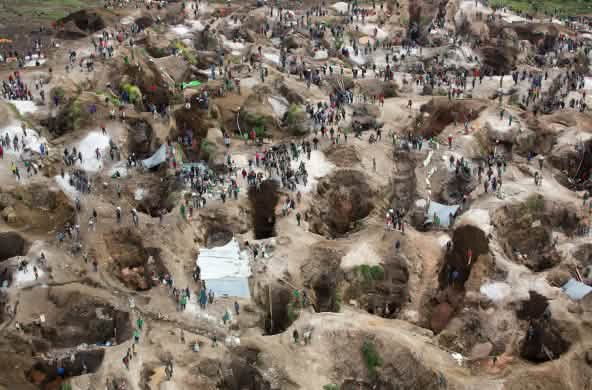Completed campaign
Philippines: power plant threatens rare cockatoos
The Philippine cockatoo is facing extinction. Only around 1,000 of these magnificent birds remain, and the largest population can be found on Rasa, a tiny island just off Palawan in the Philippines. This location – of all places – has been chosen for a coal power plant. Please urge the Philippine authorities to stop the plans.
To: Chairman of Palawan Council for Sustainable Development
“”Screeching raucously, a flight of endangered Philippine cockatoos crosses the narrow strait that separates the tiny coral island Rasa from Palawan, a much larger island and the birds’ feeding ground, for Rasa is too small to support the population. This vital route could soon be blocked by a coal-fired power plant that DMCI Power Corporation intends to build on the coast of Palawan.
Environmentalists are speaking out against the plan: “Policymakers are trying to give Palawan a green image and promote the island as the last ecological frontier of the Philippines. Yet approving a coal power plant in such a highly sensitive area and putting the survival of an entire species at risk is a crass contradiction of those efforts,” explains Peter Widmann, vice president of the Katala Foundation. The decision by the Palawan Council for Sustainable Development ignores the submitted environmental studies and the will of the municipal government, and of the residents of Barangay Panacan.
About 260 Philippine cockatoos live on Rasa Island, making it the largest population in the wild. Only 30 years ago, the birds inhabited virtually the entire Philippines. Today, the IUCN Red List categorizes them as critically endangered. Only an estimated 1,000 birds still live in the wild in the Philippines.
The imposing birds have numerous enemies: logging, agriculture and mining are destroying their habitats, and the illegal animal trade poses a grave threat to their survival. Poachers plunder almost every unguarded nest in the wild and sell the young birds as decorative pets.
Please sign the letter of the Philippine environmentalists protesting the power plant:
Philippine cockatoos (Cacatua haematuropygia) feed on the seeds of rainforest and mangrove trees, and are also partial to fruits, flowers, buds and nectar. The species is protected under Philippine Wildlife Conservation and Protection Act 9147, and trade in the birds has been prohibited under the Convention on International Trade in Endangered Species of Wild Fauna and Flora (CITES) since 1992. Rasa Island is designated as wildlife reserve and a part of the Palawan UNESCO Man and Biosphere Reserve.
The Katala Foundation is committed to the protection of Philippine cockatoos and their habitats. Only 23 birds were left in 1998 when the organization launched its extensive protection project on Rasa, an island of eight square kilometers, and adjoining areas in the district of Narra on Palawan. The work of the past 15 years has been a success, with the number of birds increasing more than tenfold to around 260 individuals.
In other parts of the Philippines, the environment is on a downhill slide. The country has had a high deforestation rate (2 percent) for years. Between 1990 and 2005, one third of its forests were cleared. Only a quarter of the land area of the Southeast Asian island nation remains forested, and only 2.8 percent can be classed as intact primary forest.
The power plant
The operator of the planned power plant, DMCI Power Corporation, belongs to the DMCI industrial holding company. DMCI also operates a hazardous open-pit coal mine in Semirara that is slated to provide the fuel for the planned power plant. In February, the mine was the scene of several landslides that cost the lives of at least five miners.
The location of the power plant is not the only problem: The coal mined in Semirara is of low quality and emits severe pollution. Eco-friendly and decentralized methods of power generation would therefore be a sensible alternative, in addition to general energy conservation and efficiency measures.
To: Chairman of Palawan Council for Sustainable Development
Stop the coal plant near Rasa Island Wildlife Sanctuary!
Dear Honorable Governor Mitra,
I am deeply concerned by the decision of the Palawan Council for Sustainable Development to issue a Strategic Environmental Plan for Palawan (SEP) clearance for the construction and operation of a 15 MW coal-fired Power Plant by DMCI Power Corporation.
The decision was taken while ignoring the council’s own technical staff’s recommendations, foremost the relocation of the site. The project is also not endorsed by the affected municipal government.
The proposed site is the last stronghold of the critically endangered Philippine Cockatoo, a species for which the Province of Palawan has particular responsibility. The power plant would disrupt the flight path of foraging cockatoos, resulting in starvation and reduction of the population. It would push the already highly threatened species even closer to extinction.
The plant would be in close proximity to the Rasa Island Wildlife Sanctuary and inhabited areas and will due to its chemical and thermal pollutants certainly have irreversible effects on the health of the local community, as well on the marine and terrestrial ecosystems.
I strongly feel that such a project is inappropriate for Palawan, which owes the increasing numbers of local and foreign tourists to its reputation as last ecological frontier of the Philippines.
Therefore, I sincerely urge the Palawan Council for Sustainable Development to withdraw the granted SEP clearance for the said project.
Sincerely,

